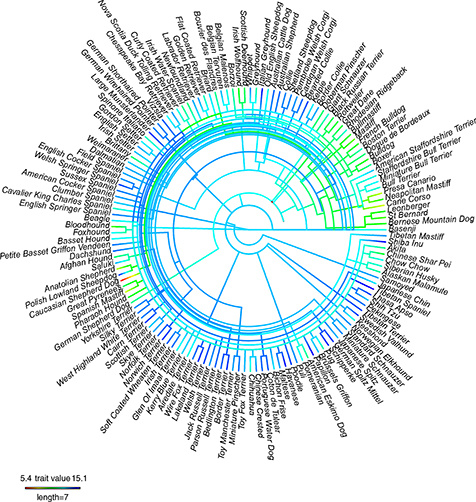Dog Longevity: Influence of Size, Nose Length, Sex, and Breed
By Caroline Coile
 How long do they live? That’s a question savvy new dog owners want to know about the breed of their choice. And to a certain extent, we’ve always been able to answer that, although just about every source overestimates the typical age of every breed. But in general, we know that little dogs live the longest and big dogs the shortest; that females tend to live longer than males; and that certain breeds don’t live as long as they should.
How long do they live? That’s a question savvy new dog owners want to know about the breed of their choice. And to a certain extent, we’ve always been able to answer that, although just about every source overestimates the typical age of every breed. But in general, we know that little dogs live the longest and big dogs the shortest; that females tend to live longer than males; and that certain breeds don’t live as long as they should.
Now a huge study from Dog’s Trust UK confirms that, and more–and did it in a big way. The researchers studied data from over a half-million dogs to investigate how breed, body size, sex, and face shape influence life expectancy.
They found the median life expectancy for all dogs was 12.5 years. The breeds with the longest median lifespan were Lancashire Heeler (15.4 years), Tibetan Spaniel (15.2 years), Shiba Inu (14.6 years), Papillon (14.5 years), and Lakeland Terrier (14.1 years).
The five breeds with the shortest life expectancy were Caucasian Shepherd (5.4 years), Preso Canario (7.7 years), Cane Corso (8.1 years), Mastiff (9.0 years), and Saint Bernard (9.2 years).
Remember, median age refers to the age at which half the populations dies younger, and half die older. It’s not influenced as much by outliers, either dogs that die at a very early age or those that live seemingly forever. It’s the latter, however, that tend to stick in people’s mind, and is probably why almost all of us overestimate the typical lifespan for our own breeds.
Overall, large dogs are at a 20% greater risk of early death compared to small dogs.
Males also die earlier, on average 0.3 years earlier than females.
Brachycephalic breeds have a 49% chance of early death compared to dogs with medium-length muzzles, possibly because of breathing difficulties or heart problems.
Interestingly, in contrast to most, but not all, previous comparisons, the median lifespan for purebreds was 0.70 years longer compared to crossbreeds, including designer dogs.
When traits are combined, small dolichocephalic (long-nosed) breeds had the longest life expectancy, but medium and especially large mesaticephalic (medium-nosed) breeds lived the longest, brachycephalic breeds of all sizes living the shortest—although there was little difference in life expectancy between long- and medium-nosed large breeds, especially males.
There’s also an evolutionary/genetic influence. Closely related breeds tend to have similar life expectancies. A cladogram, or graph of relatedness of dog breeds, shows those genetically closest, indicating more relatedness, tend to have similar life spans. In the attached cladogram, longer lives are indicated by cooler (bluer) colors, and shorter by warner (redder) colors. More closely linked breeds, such as Salukis and Afghan Hounds, versus the Mastiff breeds, tend to have similar colors.
McMillan, K.M., Bielby, J., Williams, C.L. et al. Longevity of companion dog breeds: those at risk from early death. Sci Rep 14, 531 (2024). https://doi.org/10.1038/s41598-023-50458-w
Short URL: http://caninechronicle.com/?p=280748
Comments are closed












